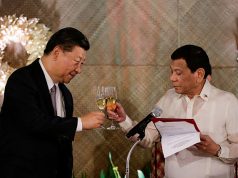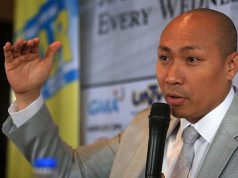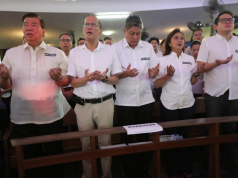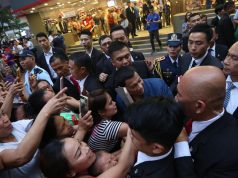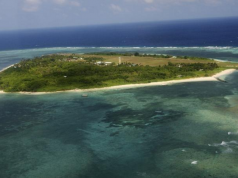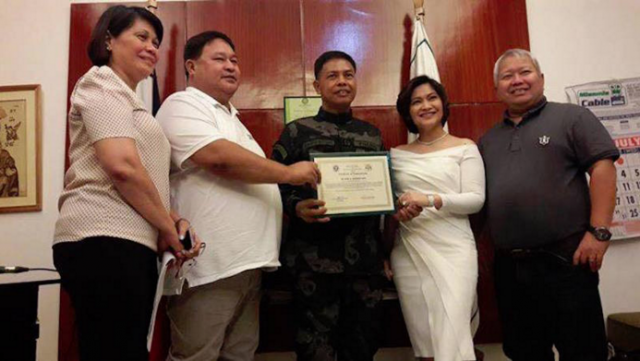
MANILA – A lawyer’s characterization of the Sunday dawn raid that killed Ozamiz City Mayor Reynaldo Parojinog and 13 others as “Mayor Espinosa Part 2” is gaining currency amid an admission by the city’s controversial police chief that they deliberately cut off closed circuit television cameras prior to the raid.
The shut CCTV cameras – which could have been useful for post-event investigations – fueled concern that the operation on three Parojinog clan houses and farms bore eerie similarities to the November 5, 2016 killing of Albuera, Leyte Mayor Rolando Espinosa Sr. in a Baybay subprovincial jail.
In both instances, the police claimed they were “engaged” by both mayors in a gunbattle, forcing them to shoot back.
Both raids were done at dawn: Espinosa’s cell was raided just before 4am; Parojinog’s house, at 2:30am, with police justifying the unholy hour as necessary for easier movement. Besides, they said, the rules allow service of warrants any time of day or night.
In both cases, the Criminal Investigation and Detection Group (CIDG) played a key role: the CIDG-Region 8 in the Mayor Espinosa killing, and CIDG-10 in Parojinog’s. Both CIDG units claimed they were out to serve search warrants on the mayors, on information these had unlicensed firearms.
The need for warrants to search Espinosa’s detention cell in the Baybay subprovincial cell, however, drew suspicion early on from senators participating in the inquiry conducted by the Justice and Public Order committees.
In both mayors’ cases, another common thread: the city chief of police. Chief Insp. Jovy Espenido was Albuera police chief when Espinosa was gunned down, and was subsequently assigned to Ozamiz City where, he indicated last Sunday, he had been closely watching Mayor Parojinog.
Espenido fielded media questions at length right after the Parojinog raid, justifying all actions of the local police in supporting the CIDG in serving the warrants, including the controversial shutting off of CCTVs.
The shutting off was revealed by lawyer Jeffrey James Ocang, who also claimed that the Parojinogs had not resisted the police, contrary to the version peddled by Espenido and later by his superior, Misamis Occidental provincial director Jaysen de Guzman.
Espenido himself admitted they intentionally “paralyzed” CCTV cameras for security reasons, i.e., they did not want their confidential agents and witnesses to be “identified in the CCTV cameras,” according to a report by Philippine Star.
However, the Star quoted National Police chief Ronald “Bato” dela Rosa as saying Monday that cutting off CCTV cameras was wrong because the cameras serve as part of transparency in operations, for the same reason that journalists and community officers are asked to witness such.
Expressing shock at the high casualty count for what should have been a mere service of warrant, Atty. Ocang had said Sunday in a radio interview that the Ozamiz operation looked like a “Mayor Espinosa Part 2.” He wondered aloud why even the mayor’s wife Susan was killed. His brother Octavio, a board member, was also among the fatalities.
Like a massacre – lawmaker
By the number of people killed, the raid on the residences of Ozamis Mayor Reynaldo Parojinog Sr. and his family appeared like a massacre, Magdalo partylist Representative Gary Alejano said Monday.
Alejano, however, was quick to add that all information should be considered before concluding what actually transpired.
“Maraming information pa ang dapat dumating. Initially, it looks like that,” he said in a news conference when asked if what happened was a massacre.
“Ang PNP (Philippine National Police) ‘pag binigyan ng mission, gagawin nila iyang mission na ‘yan,” he added.
The former military official also said that the police could have been more “polished” in their move when they raided the Pajorinogs’ lair and killed 14 people.
“Gusto ko talaga na ang mga drug lords mamatay sa bansa, pero pinuhin niyo naman ang operations. . . . masyadong blatant,” he added, hinting at a rubout – the same conclusion earlier reached by lawmakers in the Espinosa killing.
Alejano said the Sunday raid was reminiscent of the November 5 raid on the detention cell of Espinosa and the alleged encounter between the police and the men of Datu Saudi Ampatuan town Mayor Samsudin Dimaukom in October 2016, which killed the mayor.
“We understand the PNP, that they are there to accomplish a mission, you will do whatever you can, however, we have laws, we have established procedures, we have due process of law,” he said.
“Hindi pwedeng binigyan ng baril ang authority at gagamitin niya sa sibiliyan, dapat may rules d’yan. . . . That’s what we want to emphasize na sa kalaunan maggaamit ito sa hindi drug suspects,” he added.
Alejano said the Parojinog group was organized as an anti-insurgency group to fight the New People”s Army. When its mission ended, the group disbanded and some of its members got involved in kidnap-for-ransom activities.
“Just like the war on drugs, iyong mga ginagamit ay nagsa-sideline sa illegal activity,” he said. He said the President was pressured to catch the big fish in the illegal drug trade, not just the small fry “wearing slippers.”
The killing of mayors could be used as some sort of showcase: to counter critics’ claim that only poor suspects are targeted in the controversial Oplan Tokhang, later re-named Oplan Double Barrel. “He can say, look at this, this is our accomplishment in the war on drugs, this is big fish,” he said.
“But again, kahit tayong lahat ay gustong mawala ang droga sa Pilipinas, sana hindi ito mapalitan ng mas matinding problema balang araw,” Alejano added.
No need for probe yet – Lacson
Despite the similarities between the deaths of the two mayors, the Senate’s Public Order committee chairman, who played a key role in the Espinosa inquiry, does not yet see the need for another Senate investigation.
Sen. Panfilo Lacson said that, as former chief of the PNP, he was always inclined to presume regularity of operations, unless there were very compelling details as in the Espinosa case.
“You can presume regularity in the performance:[There was a] search warrant; they were fired upon. Unless [there is] clear evidence pointing to the contrary na hindi naman sila pinutukan [that they were not fired upon], then probably. And if a resolution [is filed], let’s see the contents of the resolution. Baka may information siya na di alam ng [They might have information not known to the] Senate,” Lacson said.
“Tignan muna natin kung ano ang subsequent reports na lalabas [Let’s wait for subsequent reports],” he added.
While admitting there are speculations indicating some questionable parts of the operation, Lacson said, “Sabi ko nga at this point, walang reason para mag-imbestiga ang Senado. Unlike yung Albuera, masyadong [it was too] blatant, eh.”
Lacson, meanwhile also said there should be no issue with the service of warrants at dawn, or in the dark, because even when he was in the PNP, it was better to operate under cover of darkness.
Susugod ba ako ng araw? Kitang kita naman ako [Should I swoop down at daytime? I’d easily be seen].”- With reportage by Lira Dalangin-Fernandez and Mae Anne Los Baños, News5




